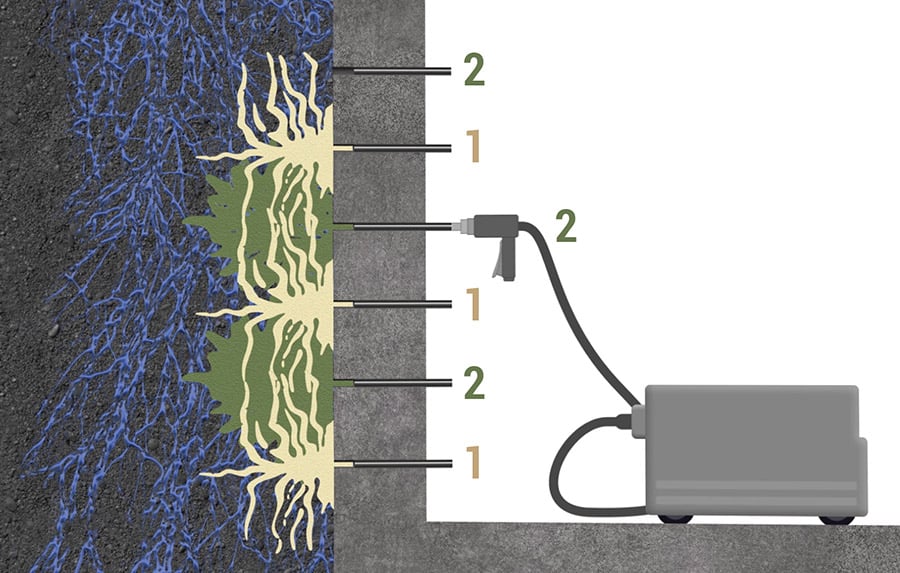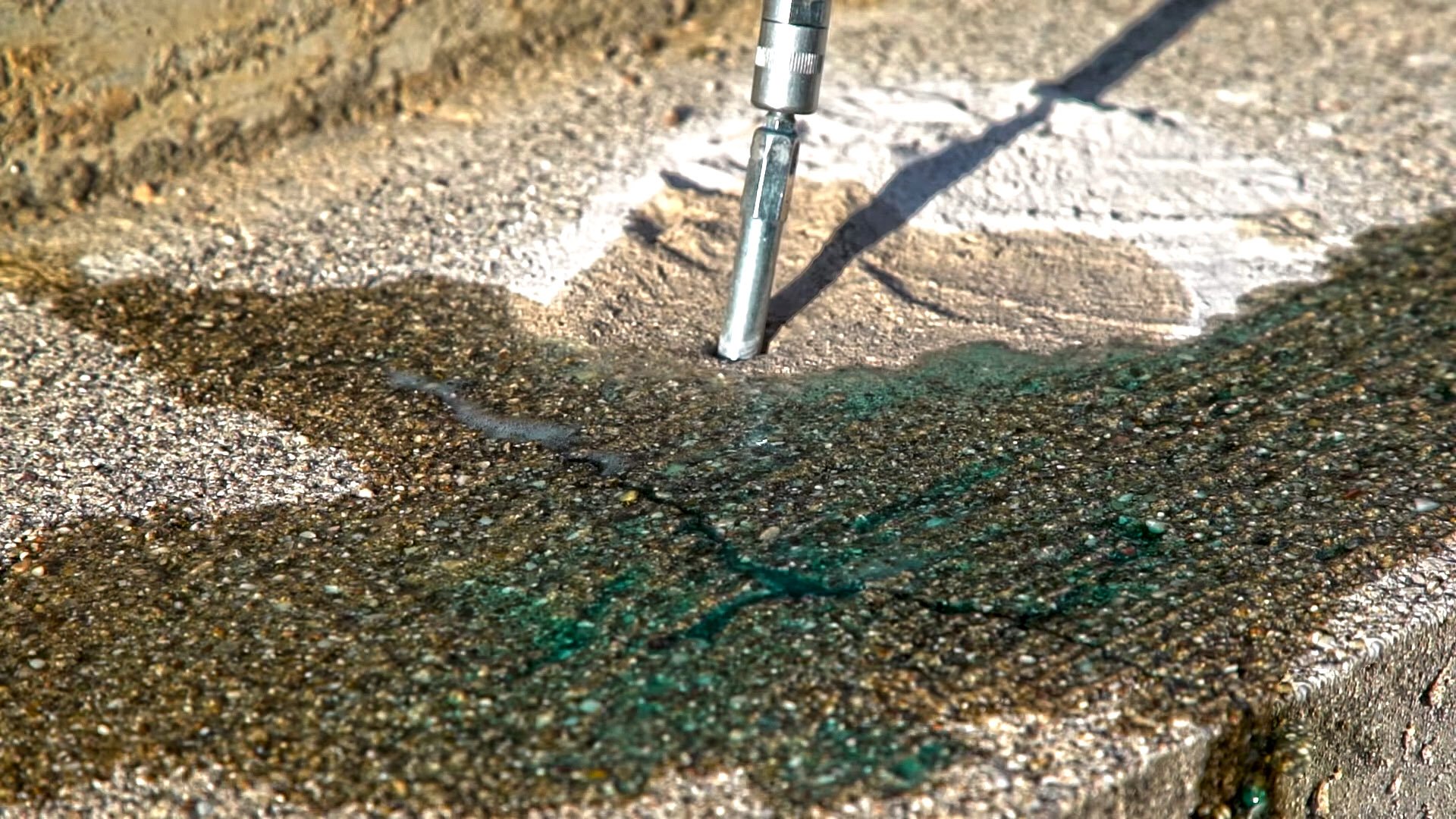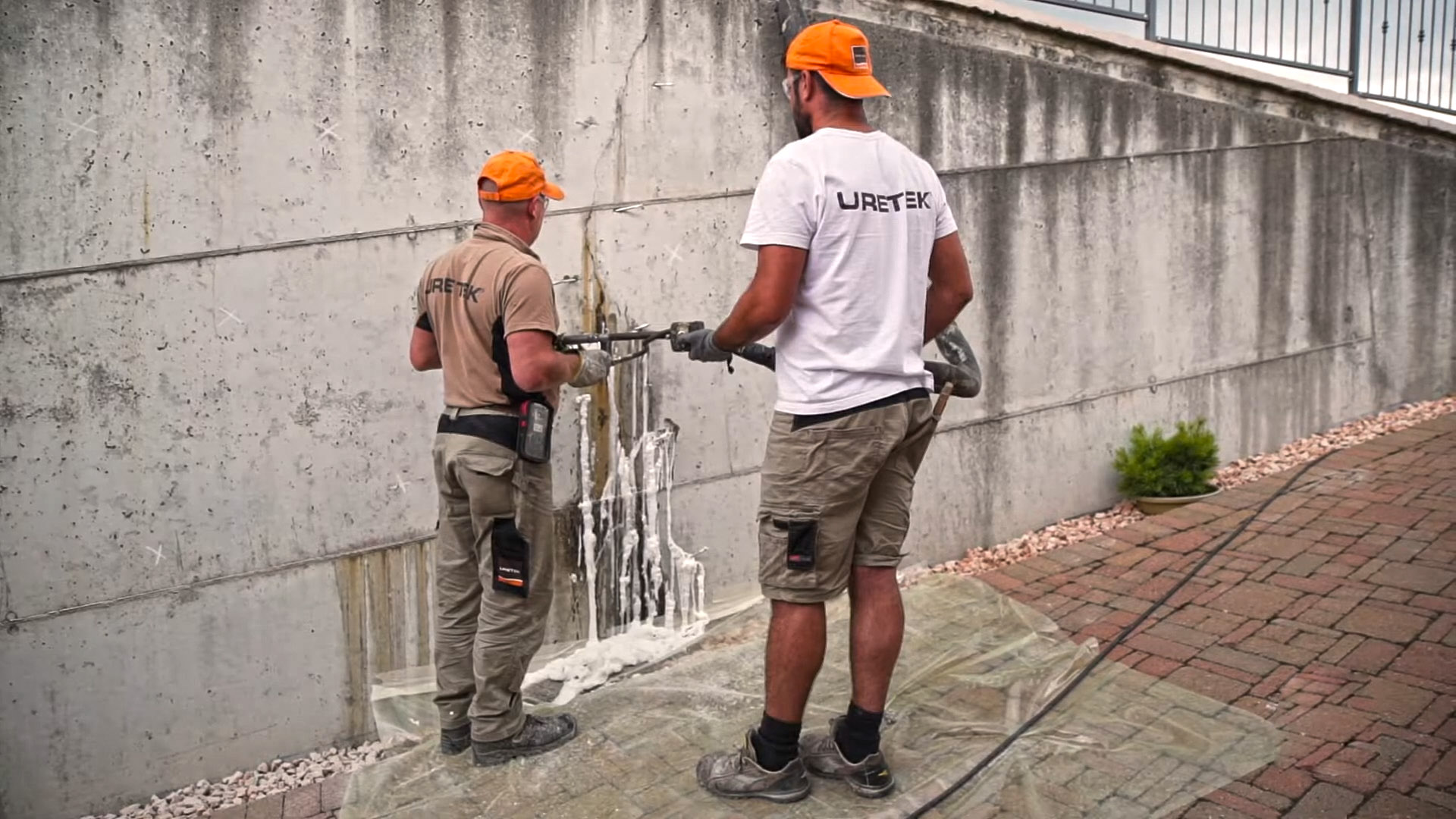We stop infiltration of water in retaining structures
Are you looking for a solution to stop water infiltration in structures such as:
We stop water infiltration with injections of expanding resin and saturating gel
To stop water infiltration through masonry structures that generally have discontinuities (joints, casting joints, cracks, holes, etc.), we inject an expanding resin and saturating gel. The start of the resin reaction depends on the presence of water and generally varies from 30 to 50 seconds.
We have patented the Uretek Water Barrier® technology, an exclusive system for stopping infiltration in masonry, usually retaining walls, which contain discontinuities.1) Resina Uretek®, 2) Gel Saturante Uretek®
The advantages of the Uretek solution for stopping water infiltration
We work on commercial, industrial, and civil buildings and infrastructure to restore operational safety without interrupting your work. We make a clean, immediately effective intervention.
![]()
![]()
![]()
![]()
- Quick application
- Protection against future water infiltration
- Immediately visible results
- No disturbance to normal activities in progress, small work sites
- No demolition or excavation
- Eco-friendly technology
- More convenient compared to other interventions
Fields of application
Civil buildings: basements, cellars, lift wells, flooring
Road and railway underpasses
Tunnels
Hydraulic joints (for example, pools, basins, pipes, etc.)
Diaphragms
Underground parking
Accessible concrete tubes and wells
Halting water infiltration in
- Masonry, foundation slabs, or flooring in reinforced concrete
- Stone or brick masonry
See how we have resolved issues
We are close to you and we work wherever in the world our professionalism is needed.
We are familiar with your area and bring with us multinational experience.
In 30 years of experience,
we have completed more than 55,000 projects.
LEARN MORE
Water infiltration in masonry is generally caused by:
- seasonal increase in the water table;
- extraordinary weather events;
- new nearby constructions;
- incorrect channelling of surface water;
- phenomena of underground filtration.
Excessive moisture accumulated in the structure may lead to:
Aesthetic damage such as stains on the walls, mould, efflorescence of superficial salts, chalking, crumbling of plaster, and disintegration of the load-bearing structure. Due to the continuous evaporation of excess moisture, the crystallization of salts on the surface causes irreversible aesthetic damage that increases over time.
Less comfort: damp walls, flooded flooring, bad smells, unserviceable rooms. Water infiltration or excessive moisture on the walls transfers to the floor, making normal use of the room impossible or even impracticable.
The excessive presence of water in perimeter structures instead leads to low thermal efficiency of the building envelope, favouring the onset of mould, fungus, and bad smells.
Structural damage, such as the appearance of new cracks, reduction of load-bearing capacity of the constituent structural materials, malfunction of electrical systems, anomalous deterioration of technological systems. Salts dissolved in the soil and construction materials are carried to the surface by excessive moisture. This continuous accumulation creates growing crystals that generate enough pressure to cause the structure to crumble. This process increases over time. In addition, the increase of moisture in the material decreases its mechanical resistance to compression, which may cause the structure to sink, often with the consequent formation of cracks on the wall surface.
Higher heating and electricity costs, expenses to restore the deteriorated surface, and loss of real-estate value. A damp wall has little insulating power since the water within, as an optimal heat conductor, causes very high thermal dispersion, and therefore elevated heating costs (a damp wall is 3 times less insulating than a dry one). The use of dehumidifiers and heaters does not solve the problem, and can even increase electricity costs. Building surface interventions (painting, replastering, etc.) are not long-lasting, often need to be repeated every year, and translate only into continuous, unnecessary expenses.


